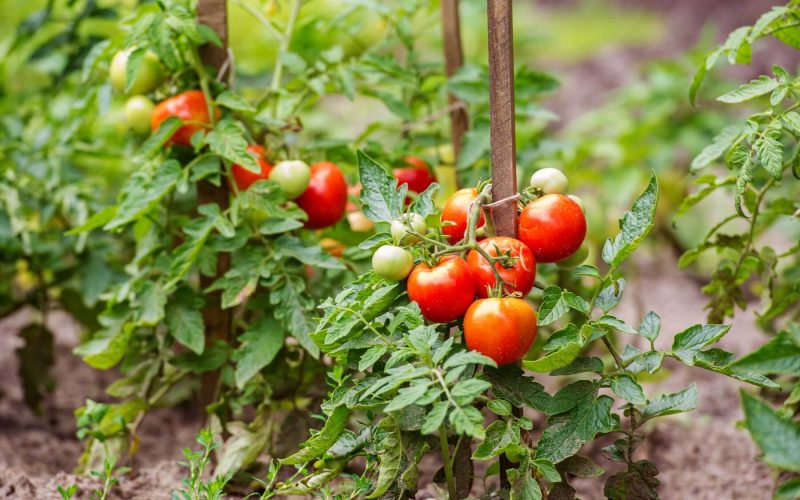Tomatoes are among the most popular vegetables to grow in the garden today. They are productive, rich in nutrients and are delicious.
Little wonder they are so popular. It behooves us then to examine some plants to grow with tomatoes in the garden.
Scientifically known as Solanum lycopersicum, tomatoes belong to the nightshade family- Solanaceae, and are cultivated extensively for their edible fruits.
Despite this, it is considered a vegetable even though it is technically a fruit.
With over ten thousand varieties worldwide, tomatoes are a staple ingredient in many recipes and diets.
They are easy to grow and maintain and can produce a lot of fruits in a short amount of time.
However, they are sometimes impacted by disease, low production, pest infestation, or other issues.
But, when grown with certain plants, the tomatoes’ overall health is impacted positively.
Benefits of Planting Tomatoes With Other Plants
Partnering tomatoes with other plants is known as interplanting, intercropping, or creating a polyculture.
But it is commonly considered companion planting. Partnering certain plants with tomatoes helps one to use the available space efficiently.
More so, other fascinating benefits come with this practice, which is listed below.
- They attract beneficial insects like aphids and caterpillars that help keep pests away.
- They entice essential pollinators to the tomatoes.
- Some plants produce substances that repel pests that may eat your tomato plants.
- They act as living mulch and weed control
- Some of these plants prevent diseases by acting as natural fungicides
- They improve and add to the soil nutrients, encouraging growth and improving overall yield.
- They can also protect the soil from wind erosion and heavy rain, reducing evaporation during a hot summer.
While your aim may be to achieve some of the benefits above, consider that not all plants are suitable companions for tomatoes. Pairing it wrongly might decrease yield or affect the plant’s health.
For instance, some plants may have different habitat requirements or compete for nutrients with tomatoes.
Besides, some of these plants seem like a great combo choice but would affect the tomatoes in the long run.
An example here is planting other nightshade family members, like peppers, near your tomatoes.
Since peppers and tomatoes are closely related and have similar growing requirements, they can grow together theoretically.
However, they are susceptible to the same pests and diseases, easily spreading from plant to plant.
Pairing these plants together may increase the spread of disease in the garden.
Hence, it is important to consider the plant to be paired with the tomatoes. Keep reading as we examine some plants to grow with tomatoes.
Plants to Grow With Tomatoes
So far, in this article, we’ve looked at some benefits of incorporating certain plants with tomatoes.
In that vein, we will examine these plants based on some of those benefits.
Some of these plants are:
1. Basil

Among some of the plants that grow with tomatoes is basil (Ocimum Basilicum).
Interplanting basil with tomatoes effectively improves the tomatoes’ overall health.
This is because basil increases root size, and one of the secrets to increasing tomato yield is ensuring the root system is deep.
More so, basil can act as an indicator plant for tomatoes. When interplanting with tomatoes, basil will show the presence of powdery mildew and other diseases before it will show on a tomato plant.
This will give you headway as you deal with the disease, so it won’t have a chance to show on the tomatoes.
Basil has also been useful in discouraging the spread of thrips and tomato hornworms. The effect of thrips and hornworms on tomatoes isn’t great.
Thrips are capable of causing stunted growth, transmitting tomato spotted wilt virus and stippling on the fruits, while hornworms will eat the foliage of tomato plants and leave only the stems behind.
Now, the odor released by the basil plant masks the scent of tomato plants, which makes it difficult for these pests to cause damage.
2. Borage

Borage (Borago Officinalis) makes a great companion to tomatoes in the garden.
High in calcium and potassium, planting borage with tomatoes adds trace minerals to the soil, improving soil for tomato health and boosting their natural ability to resist disease.
Borage can also act as living mulch when grown with tomatoes. Its wide leaves can protect the soil from run-off erosion.
More so, the plant repels hornworms and attracts pollinators, contributing immensely to the tomatoes’ overall growth.
3. Asparagus

Another plant that can be grown with tomatoes is asparagus (Asparagus Officinalis).
Planting asparagus here will also go a long way in improving the tomatoes’ health.
This is evident because asparagus helps clear the soil of harmful nematodes that can attack tomato roots.
In addition, asparagus produces a natural fungicide that helps prevent early blight and botrytis.
The interplanting practice between tomatoes and asparagus favors both plants—little wonder they are considered dynamic duos of the garden.
A symbiotic relationship exists between asparagus and tomatoes, making it a win-win for both plants.
Here, while asparagus deals with root-knot nematodes, the chemical solanine produced by tomatoes repels the asparagus beetles that cause harm to the asparagus plants.
4. Carrots

Carrot, also known as (Daucus Carota), does well in the tomato patch. Whether in the kitchen or garden, carrots and tomatoes pair nicely together.
When grown together, please give them a little more space in between so they don’t compete.
The importance of a plant with a good root system cannot be over-emphasized. Growing carrots can help to aerate the soil around tomato roots naturally.
The long tap roots of carrots help to loosen soil in the garden, improving the root growth of your tomato plants.
Carrot is also considered one of the plants to grow with tomatoes because it can be a good neighbor to tomatoes as it attracts parasitic wasps that feed on caterpillars, like tomato hornworms.
So, when these wasps visit the carrot plant, they can decide to go a mile and deal with the hornworms disturbing the tomato plant.
5. Garlic
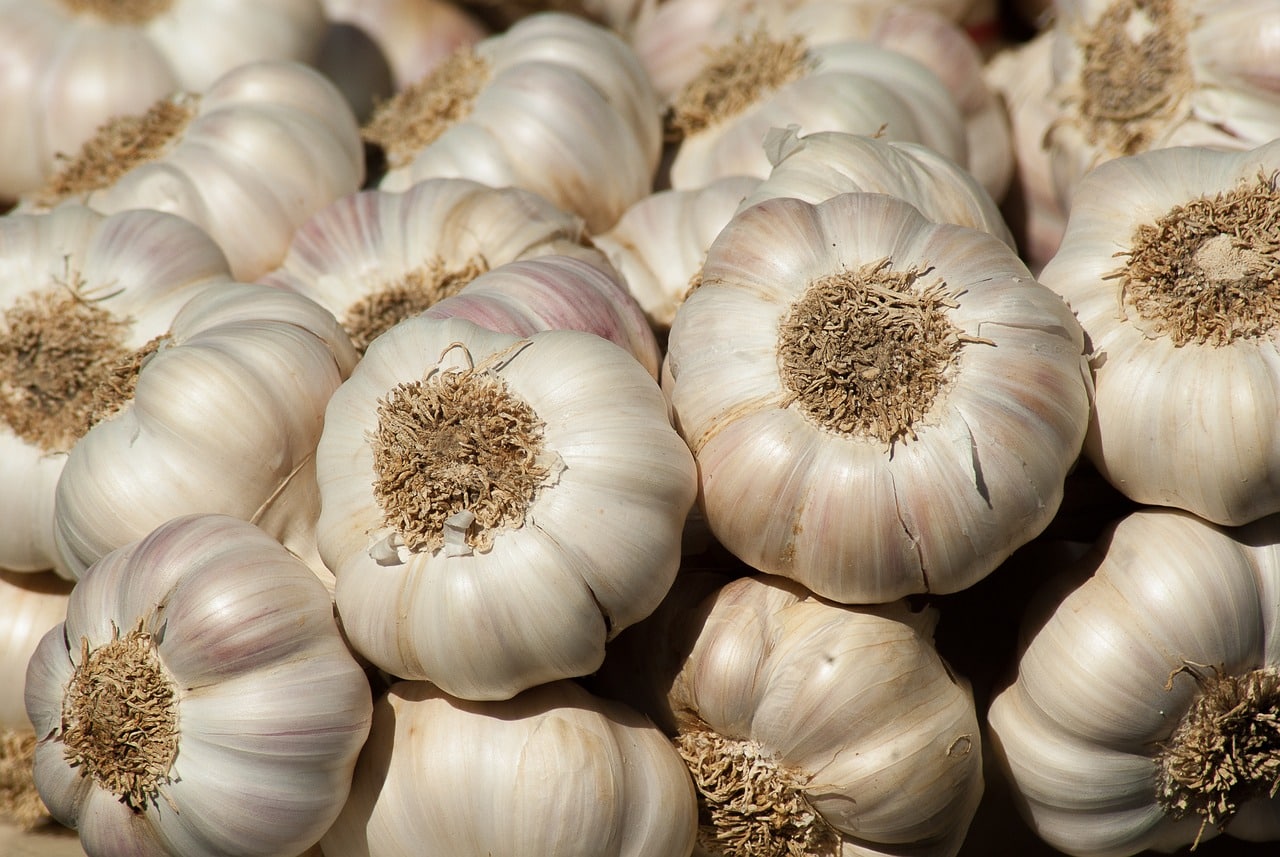
Garlic (Allium Sativum) is another plant that can be grown with tomatoes.
It is a great choice with tomatoes due to its strong scent that naturally repels pests like cabbage loopers and root maggots, which can affect tomatoes’ health.
It also masks the smell of ripening tomatoes, which would help keep moths away from them.
Along with its strong scent, its antibacterial and antifungal compounds deal with soil-borne diseases that may affect the health of tomatoes.
The height of garlic is also favorable as it won’t block out sunlight around the tomato plants. More so, it is also helpful in preventing late blight disease.
6. Thyme

Tomatoes are self-fertile, so even without pollinators, they can produce fruit.
However, they produce a bigger harvest when pollinators are involved, and thyme (Thymus Vulgaris) is one of such pollinators.
Thyme is also one of the plants that grow with tomatoes. Incorporating thyme in your tomato garden comes with myriad benefits.
It is a low-growing plant and makes a great choice as a living mulch. In its blooming season, thyme attracts pollinators.
Its bloom also attracts parasitic wasps, which prey on tomato hornworms and other caterpillars.
More so, thyme leaves produce a strong aroma that repulses pests and keeps them far away.
Studies show that planting thyme with tomatoes reduces egg-laying in armyworms, reducing the population of armyworms in the tomato garden.
7. Zinnias
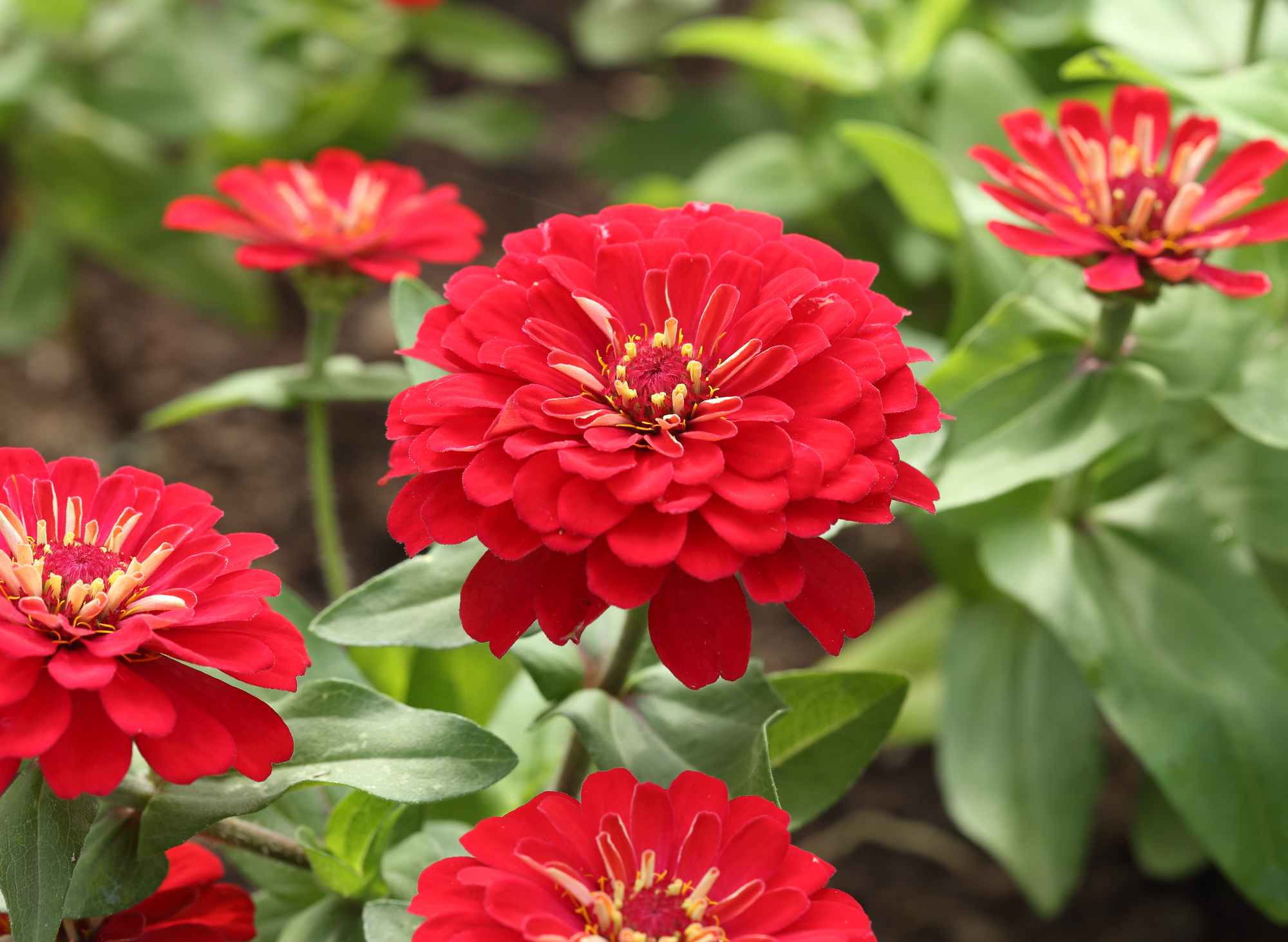
One other plant to grow with potatoes is Zinnias (Zinnia Elegans). Zinnias are colorful, low-maintenance plants that are mostly grown for aesthetics.
They usually bloom early and attract pollinators to the garden. They also attract beneficial insects.
The presence of beneficial insects like wasps deters pests like tomato worms.
It is worth pointing out here that tomato worms are one of the most damaging pests found in the garden, and we can see that zinnia’s presence will attract the wasps, which are the enemies of tomato worms.
8. Lavender

The beautiful flowers of lavender (Lavandula Angustifolia) make the plant an ideal companion to tomatoes in the field.
Planting lavender here will help attract pollinators like bees, which goes a long way in promoting healthy tomato production.
While considering lavender a nice choice for your tomato garden, also note that lavender does well in dry sandy soils, unlike tomatoes, which need well-drained soil. Hence, they should be grown in pots and placed near the tomatoes.
The flowers have a sweet-smelling fragrance that attracts pollinators and deters pests like whiteflies and spider mites that damage tomatoes.
9. Calendula
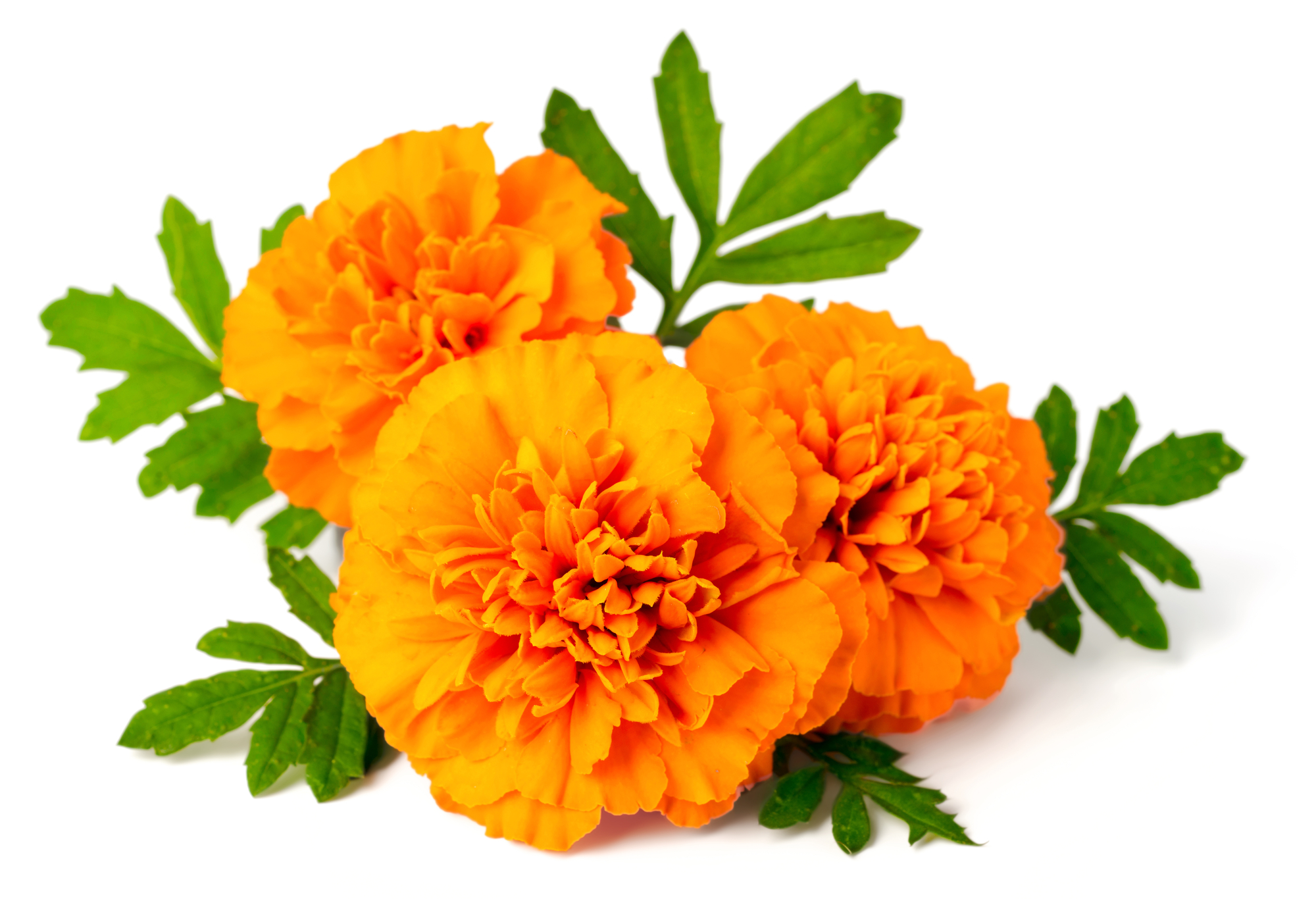
Calendula (Calendula officinalis) is commonly known as pot marigold and is easy to grow and maintain.
Besides being a wonderful sight in the garden and a darling in salads, calendula also acts as natural pest protection when interplanted with tomatoes.
Considered one of the plants to grow with tomatoes, calendula is commonly called a “sacrificial lamb” because they draw aphids away from the tomato plant.
The calendula plant also emits a chemical known as “limonene,” which protects the tomato crop by stopping whiteflies from hovering on the tomato plant.
The fragrance also repels hornworms, flea beetles, nematodes, and corn earworms.
Planting calendula also attracts black flies, which draw the presence of predatory hoverflies.
The presence of hoverflies in a tomato patch is one that gardeners love because these hoverflies help to keep the pest population under control.
10. Radish
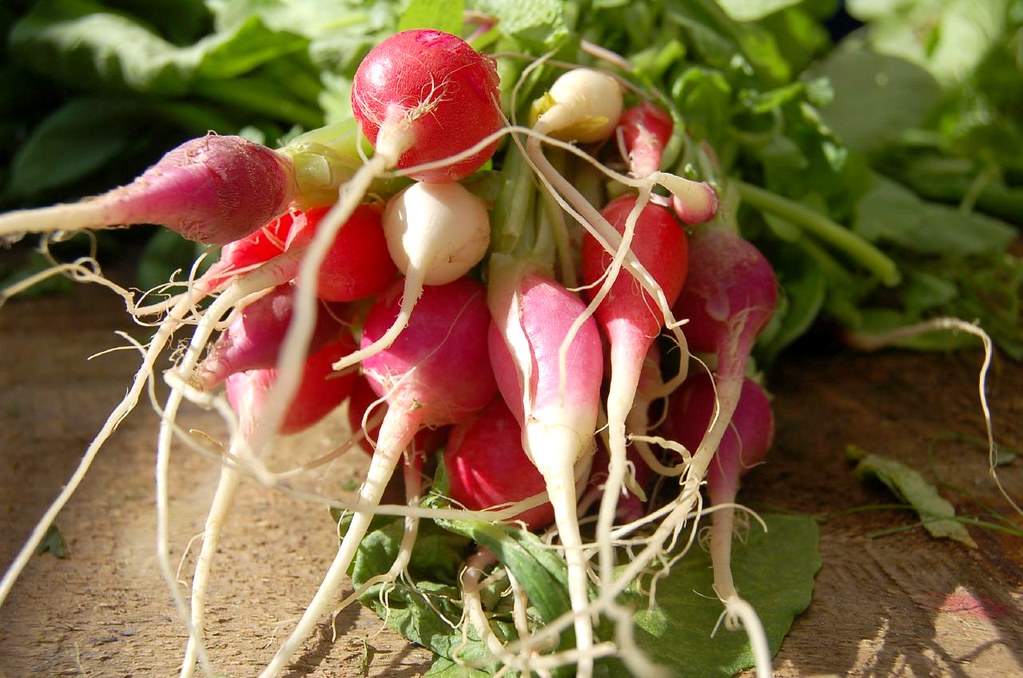
Radish, also known as (Raphanus Sativus) are low-growing root crop and a nice choice to grow with tomatoes.
They do well in shallow soil and will not compete with the tomatoes for nutrients and light. They can be interplanted around tomatoes during the growing season.
Like calendula, radishes are another excellent sacrificial trap in the tomato patch. Planting them adjacent to the tomato plant here will lure flea beetles away from the tomatoes.
Flea beetles are dangerous pests that can cause ragged holes in tomato leaves and transmit diseases like bacterial wilt.
But then, these flea beetles love radishes and would prefer chewing these holes in the radish leaves instead of destroying young tomato plants.
So, you get to keep your tomato plants pest-free and maximize your garden space.
11. Black Eyed Pea

The black-eyed pea (Vigna Unguiculata) is an African leguminous plant that can also be planted with tomatoes.
They help to increase nitrogen in the soil, which improves overall soil health and the health of tomatoes.
Also commonly known as cowpea, the black-eyed pea should be cultivated several weeks before planting the tomatoes.
Planting this cowpea with tomatoes helps reduce humidity levels around tomatoes, which can hinder fungal spore growth.
This leguminous crop also acts as a trap crop to lure green stink bugs away from the tomato crops.
12. French Marigolds
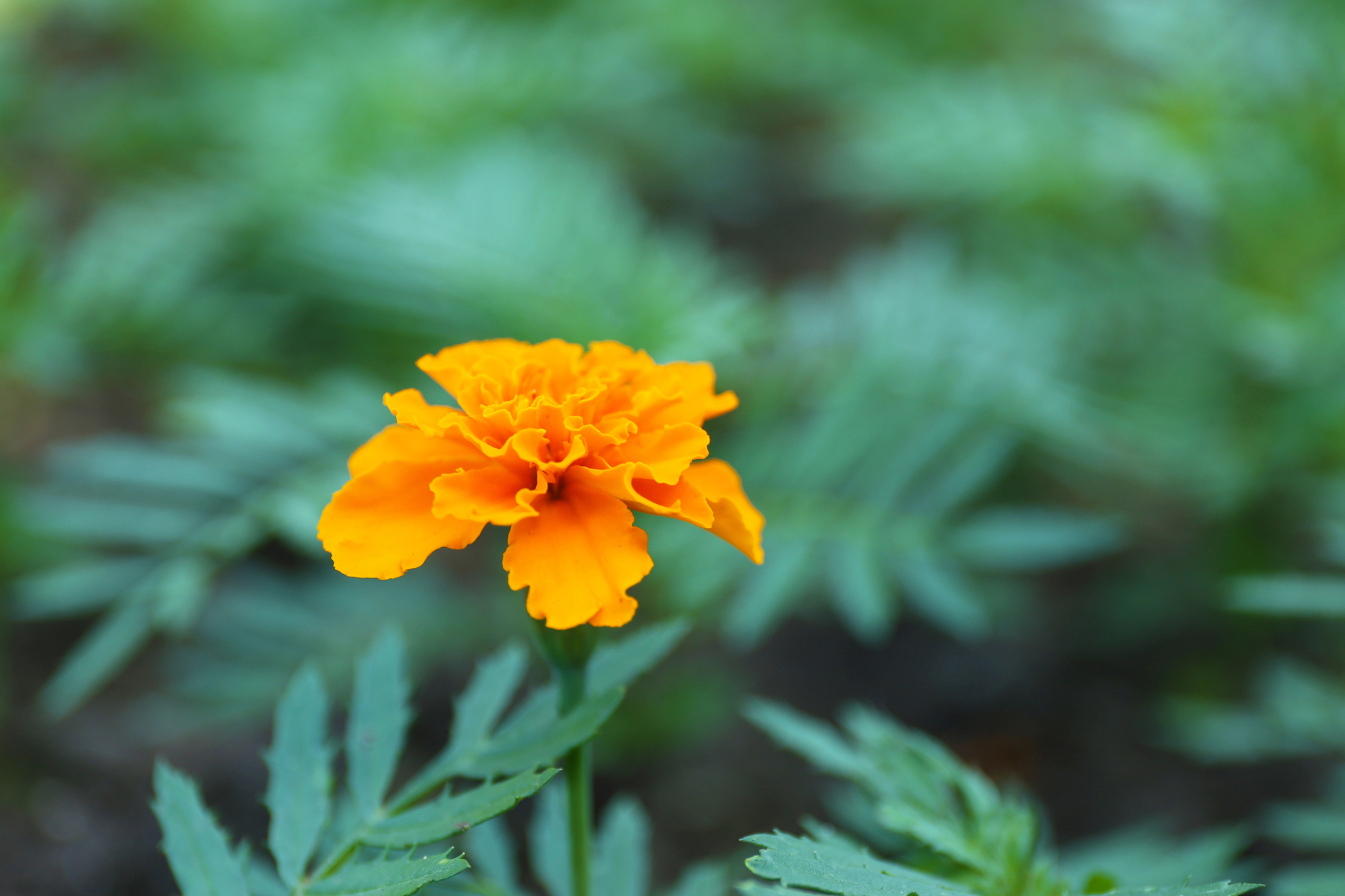
French marigolds (Tagetes Patula) are also among the plants that repel harmful insects in the tomato patch.
Marigolds are beautiful plants with blooms that come in varying bright colors.
They make a wonderful addition to the garden, help keep the soil healthy for the tomatoes, and act as a general pest repellent.
When grown with tomatoes, the strong scent of French Marigold will help deter pests like aphids, slugs, tomato hornworms, and snails, all of which love to munch on the growing tomato plants.
French marigold also serves as a trap crop for other pests. Having it around marigolds can also help ensure that the bugs attracted to tomatoes feed on the marigolds, not the tomatoes’ fruit.
Planting this in the tomato patch can also help reduce thrip populations in tomatoes and dispel root-knot nematodes.
Root-knot nematodes are parasites that feed off the nutrients in a tomato’s root system.
The roots of French Marigolds produce chemicals that are toxic to these nematodes. Hence, they are excellent repellent to these nematodes.
13. Nasturtium
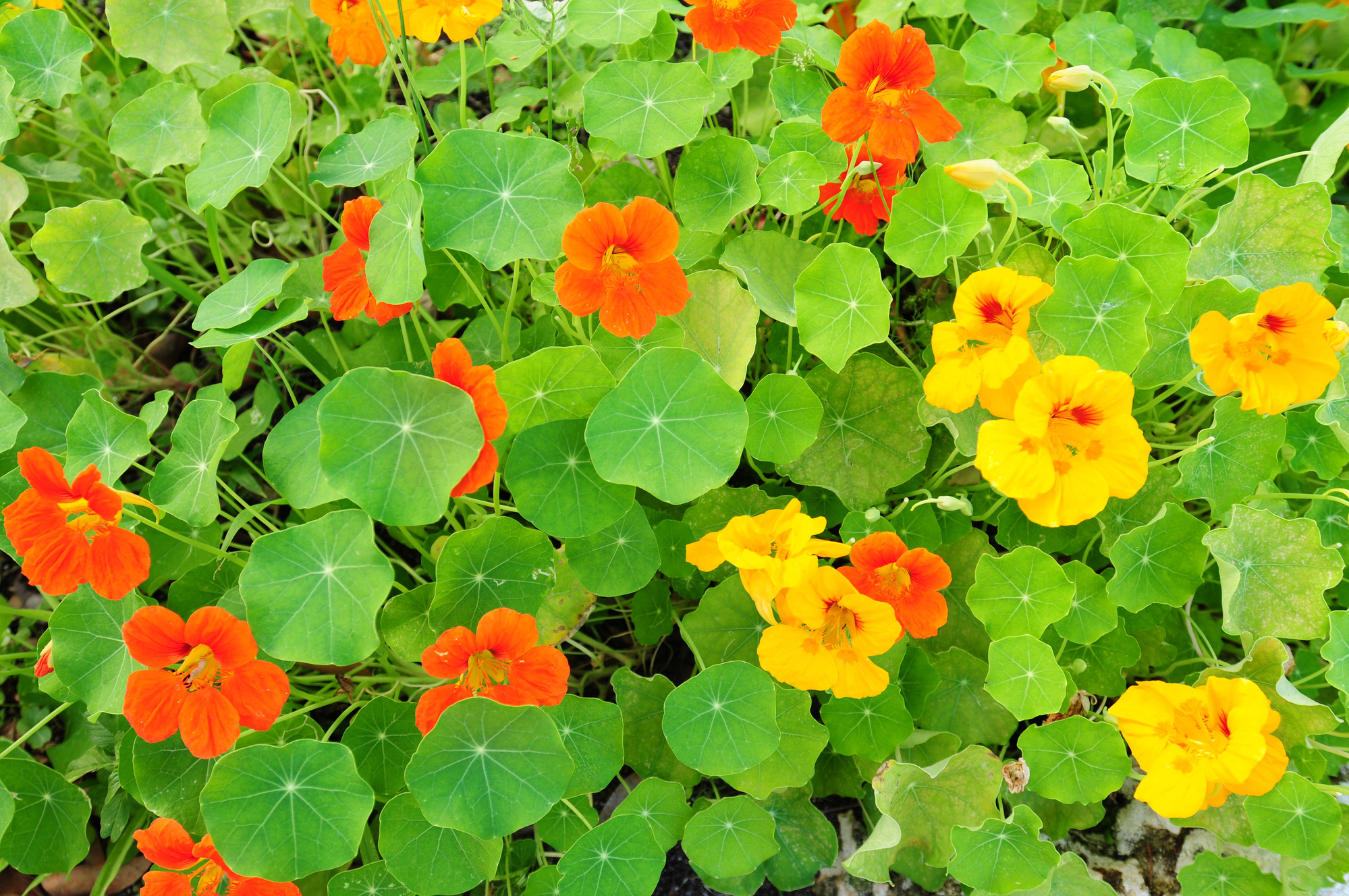
Nasturtium (Tropaeolum Majus) is also a great choice when considering plants to grow with tomatoes.
These plants add color and beauty to the garden and protect the tomato plant.
Like calendula, they make a wonderful sacrificial plant and act as a trap crop for pests.
They attract pests like aphids, whiteflies, and certain beetle species away from tomatoes, which reduces the spread of fungal disease.
Generally, nasturtium acts as a pest repellant due to its peppery, bitter oils, while its blooms also attract pollinators, other beneficial insects, and hoverflies, which feast on aphids.
One should be observant and control the spread of nasturtium in the garden because they sprawl rapidly and can overtake other plants.
14. Sage

Another plant that can be grown with tomatoes is sage (Salvia Officinalis). This hardy plant requires minimal effort, making it a low-maintenance plant.
Because of its strong, musky, fragrant scent, sage in the tomato garden helps protect the tomatoes from pests such as slugs, hornworms, flea beetles, and spider mites.
In addition, the blooms of sage attract beneficial pollinators and predatory wasps, which protect the tomatoes from worms and beetles.
Care should also be taken in how sage should be grown as companions to the tomatoes. Sage requires drier conditions and should be grown in separate pots.
15. Parsley

Parsley (Petroselinum Crispum) is also another plant that grows well with tomatoes.
Interplanting them in rows of tomatoes or potting them up in a container garden helps to attract and increase the presence of beneficial insects in the tomato patch.
Parsley is a biennial plant but is mostly grown annually because of its propensity to be bitter in the second year.
It is easy to grow and maintain, and its beautiful flowers attract beneficial insects.
Examples of such insects are hoverflies, ladybugs, and predatory wasps. The hoverflies feed off pests like aphids that attack tomatoes.
Ladybugs also consume aphids and hornworm eggs, while predatory wasps feed on hornworms.
In addition, the strong fragrance of parsley helps to keep garden pests away from the tomatoes and acts as living mulch for tomatoes.
16. Oregano

Just as it is wonderful in the kitchen, the oregano (Origanum Vulgare) plant is also great in the garden.
It makes a wonderful addition to the tomato patch. The oregano plant is perennial, cold, hardy, and easy to maintain.
Oregano is a strong-smelling herb, and its fragrance is a natural pest deterrent for unwanted garden insects.
When grown with tomatoes, it attracts beneficial insects that eat pests.
For instance, its blooms attract lacewing. Lacewing is a voracious predator of insect pests in tomatoes.
17. Cilantro
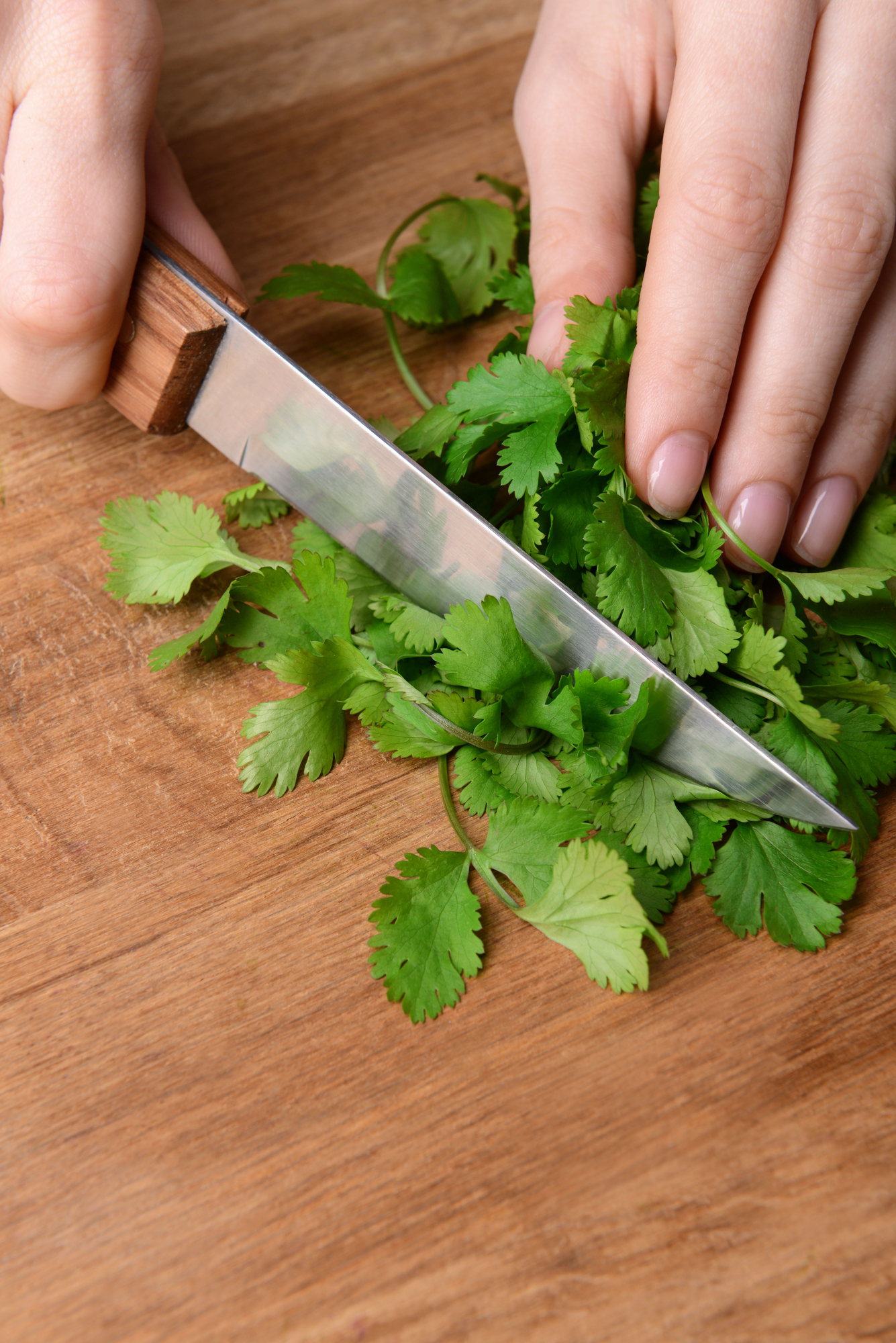
Cilantro (Coriandrum Sativum) is among the plants growing with tomatoes.
The flowers of the Cilantro plant are a great nectar source that attracts these beneficial insects.
An example of such insects is the parasitic wasps that feed on tomato hornworms.
It also attracts other insects like lacewings, hoverflies, ladybugs, and flies that feed on aphids, whiteflies, spider mites, mealy bugs, and caterpillars. The leaves of cilantro also act as repellent to some pests.
More so, this plant has an aromatic volatile chemical, and when grown with tomatoes, it will mask the fragrance of tomatoes from whiteflies and other pests, making it harder for them to find.
18. Sweet Alyssum
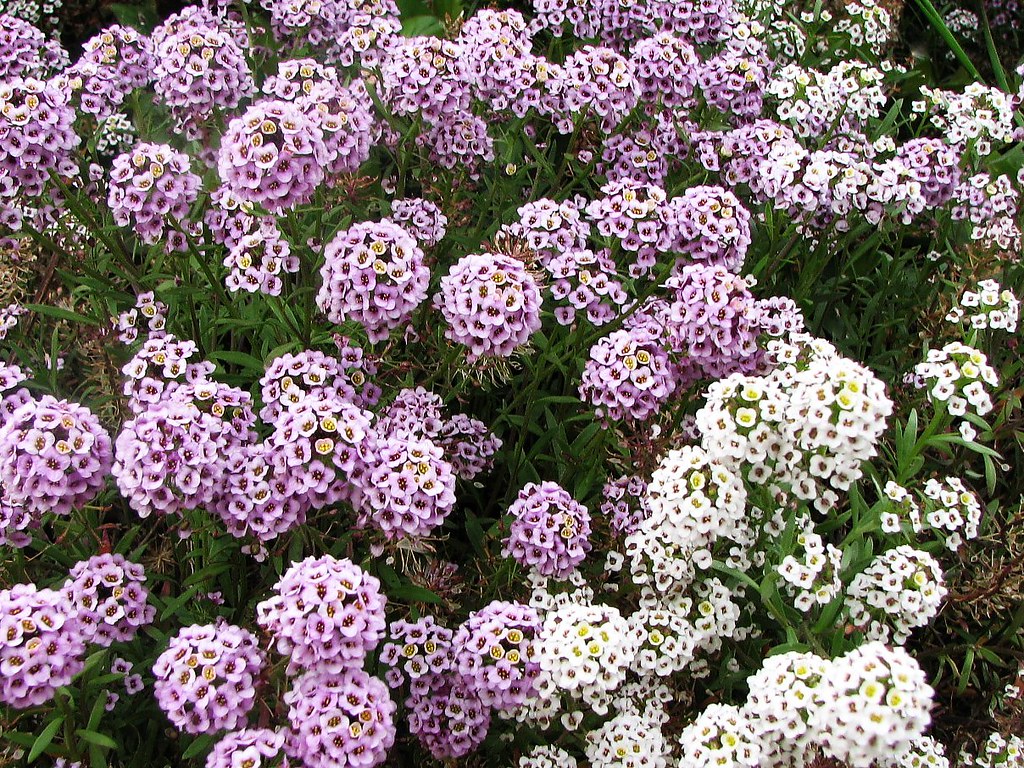
One other plant that can be grown with tomatoes is sweet alyssum (Lobularia Maritima). Apart from aesthetics, this plant is a cover crop in the tomato garden.
Sweet alyssum grows densely like a carpet, which helps to keep the weeds down.
The plant grows quickly as a cover crop and suppresses weeds. It also produces small flowers, which attract pollinating and predatory insects.
19. Crimson Clover
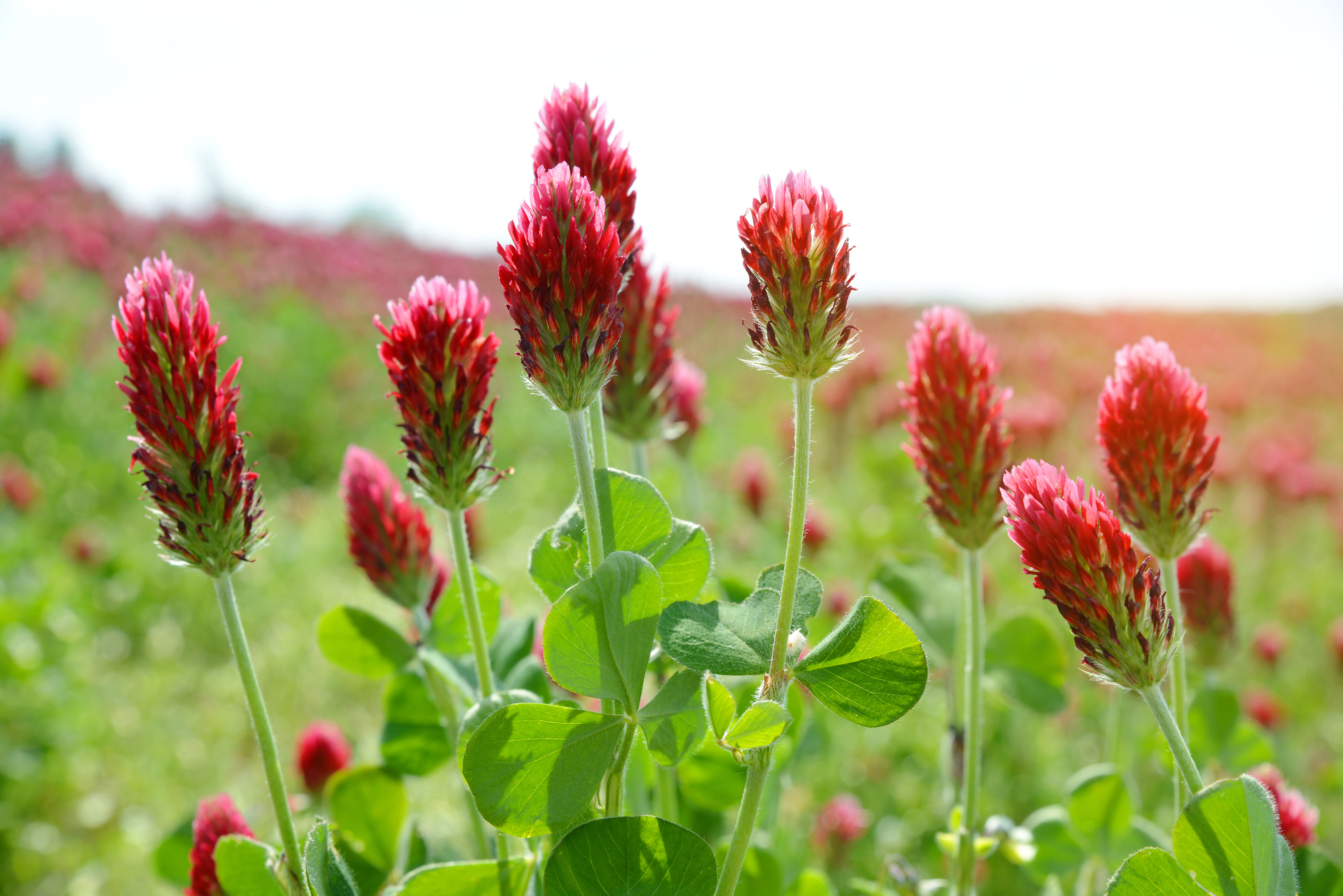
Crimson clover (Trifolium Incarnatum) can also be grown with tomatoes. The plant acts as living mulch and provides a dense vegetation mat.
As a cover crop, it makes excellent ground protection and is very effective in suppressing weeds.
Because it is leguminous, the plant will provide nitrogen to the soil, ultimately boosting yield. Its blooms also attract beneficial insects.
20. Lettuce

Lettuce (Lactuca Sativa) and tomatoes are great together in vegetable salad alone and are also a great combo in the garden.
Incorporating lettuce in your tomato garden will help to create a ground cover that will retain moisture in the soil and cut down on weeds.
Since tomatoes grow quite tall and the lettuce is close to the ground, the shade provided by tomato plants in the summer can help stop lettuce bolting and going to seed.
While the leaves of lettuce will not only act as living mulch but also help with weed management and soil moisture retention.




